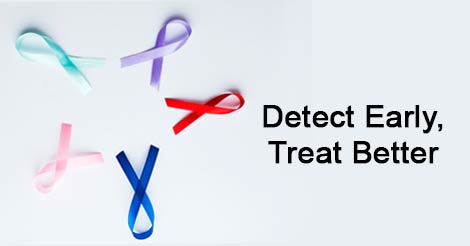Dr Sameer Kaul says Cancer Foundation striving to take research to common people
Experts on Saturday here revealed that approximately half of all cancer cases were fully treatable, enabling patients to lead normal lives post treatment. “Unlike certain lifestyle diseases such as diabetes and hypertension, which can only be managed and require lifelong adjustments, cancers can indeed be entirely curable,” Dr G K Rath told on the sidelines of the conference on oncology.
The conference was organised by non-profit organisation – The Cancer Foundation, based in New Delhi and headed by Dr Sameer Kaul, a renowned oncologist. Dr Rath, a leading oncologist of the country who formerly headed the AIIMS Cancer Centre in New Delhi, explained that currently 50 percent of cancers were treatable, some even in advanced stages.
“Early diagnosis, prevention, and effective treatment are all integral components in combating cancer,” Dr Rath said. Outlining the 80:20 principle for cancer cases, he said, “If a patient delays treatment by 80 percent, their chances of recovery diminish to 20 percent. Conversely, early-stage patients have an 80 percent chance of being cured.”
Dr Rath said that a comprehensive approach combining radiation, surgery, and chemotherapy was important for successful cancer treatment. “In certain malignancies, immunotherapy and targeted therapies also run in tandem,” he said.
Dr Rath said that advanced technologies in the coming years would enable not only the complete cure but also the prevention of cancer. Another prominent oncologist and Founder Director of the Homi Bhabha Cancer Hospital and Research Centre in Vizag, Dr Raghunadha Rao highlighted the benefits of mono-colonial antibody therapy, which he said was devoid of side effects.
“This therapy specifically targets cancer cells, unlike chemotherapy, which often leads to side effects like hair loss, loss of appetite, infections, anemia, and nausea,” Dr Rao told.
He asserted the effectiveness of this therapy against breast cancers, lymphomas, and tumors, even in advanced stages. Dr Rao discussed preventable cancer types including tobacco-related cancers, cervix cancer, oropharyngeal cancer, anal cancer, vagina cancer, and HPV-related cancers. “HPV vaccination programmes have yielded positive results in their prevention,” he said.
Dr Rao also outlined secondary prevention strategies involving HPV screening tests and local ablative therapy. “Our primary goal is not just survival, but complete recovery,” Dr Rao said. Senior Consultant in Surgical Oncology and Robotics at the Apollo Cancer Institute in New Delhi, Dr Sameer Kaul stressed the importance of disseminating research findings to the general public.
“There has been a paradigm shift in cancer research. We have witnessed patients leading disease-free lives after treatment, a scenario unimaginable five years ago,” Dr Kaul told. He highlighted the need to take the research to common people, transcending economic and social barriers, and involving various stakeholders.
Dr Kaul elaborated on the purpose of the Pahalgam conference saying that the conference aimed to raise awareness about cancer diagnosis and treatment among the people. “It’s an inclusive platform for all stakeholders: manufacturers of cancer treatment equipment, drug developers, government agencies, policy regulators, and, most importantly, the local community,” he said.
Dr Kaul said that the foundation was committed to financially assisting those who could not afford treatment and spreading awareness about cancer through programmes like ‘Knowledge at Your Doorstep,’ awareness camps, public lectures, seminars, corporate health checks, and similar initiatives. He said as life expectancy in India rises, so does the prevalence of chronic diseases, particularly cancer.
“The prevalence of cancer all over the world is very high and it is turning into an epidemic,” Dr Kaul said. He acknowledged that lifestyle factors play a pivotal role in cancer development. “Genetics and external influences contribute, but lifestyle is the chief catalyst. Factors such as tobacco use, alcohol consumption, dietary habits, reproductive norms, marriage age, attention to health, and stress are prominent contributors,” Dr Kaul said.
He said that lifestyle adjustments were critical in cancer prevention, citing research indicating that 70 percent of cancers stem from lifestyle choices that can be altered, including diet quality, and physical activity. Senior Consultant in Radiation Oncology at the American Oncology Institute in Jammu, Dr Deepak Abrol said that the higher prevalence of esophagus cancer in Kashmir was linked to low selenium mineral intake.
“Research by the University of Kashmir associates the region’s elevated esophagus cancer rates with selenium deficiency,” he said. Dr Abrol said that while tobacco-related cancers were relatively low in J&K due to less tobacco chewing, lung cancer rates were high due to cigarette smoking.
He attributed the region’s higher prevalence of esophagus cancers to the habit of consuming hot tea for breakfast. Radiation Oncologist in the Army Medical Corps in J&K, Dr Ashok Kumar highlighted the unique cancer patterns in the region. “Unlike other states, cervix cancer rates are lower in rural areas of Jammu and Kashmir. In contrast, melanoma and breast cancer are more prevalent,” he said.
Cervix cancer is largely linked to poor hygiene, while walking barefoot contributes to melanoma cases. The conference saw participation of renowned oncologists from across the country. It threw light on the progress in cancer treatment and prevention, stressing the need for broad dissemination of research findings, lifestyle adjustments, and comprehensive awareness campaigns to combat this rising epidemic.
Member of Parliament Farooq Abdullah, who was the guest of honor on the occasion, delivered the final speech. He hailed the foundation for working for the cancer patients
Earlier, Dr Sameer Kaul presented a keynote address.The conference concluded in the evening with a valedictory function.






